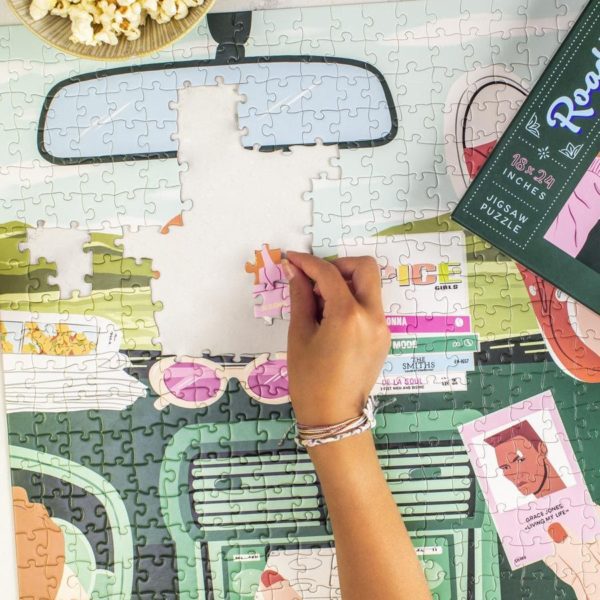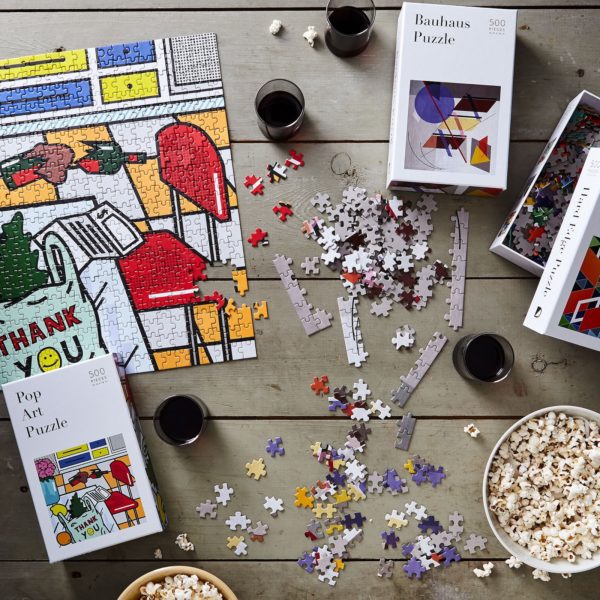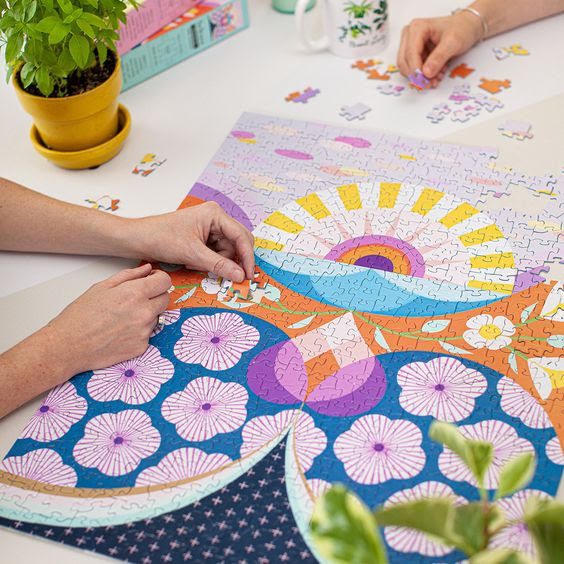
At this time of year, when we are more indoor-oriented because of long and cold winter days, and social distancing too, it’s good to have some ideas for family activities that are inexpensive and conversation-friendly. Instead of hours of television or video games, jigsaw puzzles are a great alternative. They are also good for your brain since they build great spatial reasoning and logic skills.
Putting together a jigsaw puzzle looks effortless, fun, and enjoyable. But this is not always the case, sometimes they can be rather tricky. Something that can make the process more fun is having a good strategy and good technique. Certainly, the puzzle should not be of low quality, and it is preferable to be challenging for the level of experience of the player. So we would recommend starting with 300 or 500 piece puzzles because you can finish them in a weekend or even a single evening if you put your mind to it. And if that becomes too easy, you can elevate to the puzzles with 1,000, or 2,000 pieces.
Whether you’re new to puzzles, or maybe you’re looking for some more tricks, you can check our guide to some jigsaw puzzle tips and tricks to help you master puzzles like a professional.
Choosing the right 500 Piece Jigsaw Puzzle to Begin With
New players don’t always know what is the best type of jigsaw puzzle, to begin with. There are extremely hard 500 pieces of puzzles and some that are ridiculously easy. So the best choice is somewhere in between. To choose the right one for you, keep in mind two big factors, the cut and the design of the puzzle.
The best option is to pick jigsaws that have a standard grid style of cut rather than a random cut. The pieces gravitate towards standard jigsaw shapes and line up vertically and horizontally up and down the jigsaw, with a standard grid cut. With a random cut, pieces can be in any shape at all, and they don’t always line up in any way. Since you are a beginner, you want to avoid these types of puzzles. At least until you have several jigsaws completed and you’re satisfied with your progress.
This said, you should also be very careful when choosing the design of the jigsaw puzzle. You’ll want to start with the one that can bring the joy of completion, not one that will leave you frustrated. Not all of them are equal. You can’t expect that a jigsaw with a big span of colors and patterns will take the same amount of time to complete as a single color jigsaw.
Let the puzzling begin!
Starting the puzzle is the hardest part. If you don’t know how to begin a jigsaw puzzle you may get overwhelmed. In time you’ll start figuring your process for solving them, but right now find your perfect workplace and have in mind the end game. What will you do with it afterward? Will you deconstruct it and put it back in the box, or maybe you’ll glue and frame it. Gluing can be messy so you will need a good working background. So, your workspace needs to be huge enough to fit in the full size of the puzzle and to have extra space for the additional steps. Puzzling is not a sprint, it is a marathon, so take ten minutes to set it up. Having the puzzle image before or nearby is of the utmost importance. The more you’ll look at, the more features, like shades, colors, and shapes, you’ll memorize.
Telling the difference between different shades or different areas of the puzzle by what color you see on the pieces is the sorting process. From here you can build recognizable sections of the puzzle. Sorting goes hand in hand with two other things, finding the edges of the puzzle and finding the special pieces. They are pieces of really recognizable parts of the puzzle because they have specific colors or text on them.
Some puzzles even have whimsies, special shapes like people and animals throughout the rest of the regular jigsaw shapes, they do help a lot.

Benefits of Doing Jigsaw Puzzles
Jigsaw puzzles stimulate the brain and are great for getting away from screens. They are a great brain workout and can potentially help you in preventing Alzheimer’s disease. Working on them helps you develop hand-eye coordination, color and shape recognition, and visual acuity, which is why they are good for children.
Puzzling also improves patience, problem-solving skills, organizational skills, and attention to detail. It is very beneficial in a meditative way, it can pull you out of your daily routines or something that requires your full attention and presence. While your hands and eyes work your mind can wander, plus you get a hit of dopamine every time you fit a piece. So it is a long session of satisfying feelings. Whether you do the puzzling solo or with your family, it is a great stress reliever. Dr. Susan Vandermorris, a clinical neuropsychologist, says that in our hyperconnected world, if you’re physically doing a puzzle, you are, by definition, disconnected and engaged in a task that’s immersive, away from the stresses of everyday life. And that is beneficial for your brain health.
Finishing words
The more puzzles you‘ll do, the easier will get to put them together. With practice, you’ll start to develop techniques that make it a lot easier to master them. If you take our advice and start with easier puzzles that are somewhere between the 300-500 piece range. You’ll soon be ready to start on more challenging puzzles, the ones with more complex design details or a higher piece count. We hope these tips help you to figure out your perfect strategy on how to do jigsaw puzzles. So, start small, build your passion, and enjoy the process.





